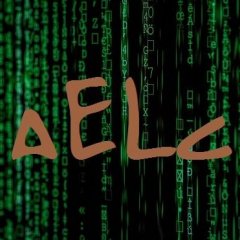-
Posts
7,419 -
Joined
-
Last visited
-
Days Won
91
UEZ last won the day on September 16
UEZ had the most liked content!
About UEZ

- Birthday 12/03/2007
Profile Information
-
Member Title
Never say never
-
Location
Germany
-
Interests
Computer, watching movies, football (soccer), being lazy :-)
UEZ's Achievements
-
 jaberwacky reacted to a post in a topic:
Tester needed ^^
jaberwacky reacted to a post in a topic:
Tester needed ^^
-
 WildByDesign reacted to a post in a topic:
SampleControls.au3 in Dark Mode
WildByDesign reacted to a post in a topic:
SampleControls.au3 in Dark Mode
-
I assume you must hook to the external program to change visuals.
-
 SOLVE-SMART reacted to a post in a topic:
Converting Transparency Level 0-255 To Percentage
SOLVE-SMART reacted to a post in a topic:
Converting Transparency Level 0-255 To Percentage
-
 Parsix reacted to a post in a topic:
Converting Transparency Level 0-255 To Percentage
Parsix reacted to a post in a topic:
Converting Transparency Level 0-255 To Percentage
-
 WildByDesign reacted to a post in a topic:
Converting Transparency Level 0-255 To Percentage
WildByDesign reacted to a post in a topic:
Converting Transparency Level 0-255 To Percentage
-

Converting Transparency Level 0-255 To Percentage
UEZ replied to WildByDesign's topic in AutoIt General Help and Support
A generic map function: ;Coded by UEZ build 2025-10-29 Func Map($val, $source_start, $source_stop, $dest_start, $dest_stop) Return (($val - $source_start) * ($dest_stop - $dest_start) / ($source_stop - $source_start) + $dest_start) EndFunc $iCol = Int(Map(87, 0, 100, 0, 255)) ConsoleWrite($iCol & " - 0x" & Hex($iCol, 2) & @CRLF) ;87% from color value (0 - 255) $iCol = 1 + Int(Map($iCol, 0, 255, 0, 100)) ;and back again ConsoleWrite($iCol & " - 0x" & Hex($iCol, 2) & @CRLF) -
 UEZ reacted to a post in a topic:
FileExplorer Treeview and Listview (TreeListExplorer)
UEZ reacted to a post in a topic:
FileExplorer Treeview and Listview (TreeListExplorer)
-
 Parsix reacted to a post in a topic:
How to Resize Animated GIF when Loaded by _GDIPlus_BitmapCreateFromMemory()
Parsix reacted to a post in a topic:
How to Resize Animated GIF when Loaded by _GDIPlus_BitmapCreateFromMemory()
-
 WildByDesign reacted to a post in a topic:
GIF Animation (cached)
WildByDesign reacted to a post in a topic:
GIF Animation (cached)
-
 Parsix reacted to a post in a topic:
GIF Animation (cached)
Parsix reacted to a post in a topic:
GIF Animation (cached)
-
When you parse the GIF anim you will get a handle to the current frame which you can resize and display appropriatly.
-
 UEZ reacted to a post in a topic:
Need help removing line from dark mode menubar
UEZ reacted to a post in a topic:
Need help removing line from dark mode menubar
-
 UEZ reacted to a post in a topic:
SampleControls.au3 in Dark Mode
UEZ reacted to a post in a topic:
SampleControls.au3 in Dark Mode
-
 argumentum reacted to a post in a topic:
SampleControls.au3 in Dark Mode
argumentum reacted to a post in a topic:
SampleControls.au3 in Dark Mode
-
 UEZ reacted to a post in a topic:
SampleControls.au3 in Dark Mode
UEZ reacted to a post in a topic:
SampleControls.au3 in Dark Mode
-
Yes, thanks 👍 Updated the code for the window when date pick icon was clicked. Still searching for a way to change the date control itself.
-
 UEZ reacted to a post in a topic:
Date/Time Pick coloring
UEZ reacted to a post in a topic:
Date/Time Pick coloring
-
 UEZ reacted to a post in a topic:
SampleControls.au3 in Dark Mode
UEZ reacted to a post in a topic:
SampleControls.au3 in Dark Mode
-
 WildByDesign reacted to a post in a topic:
SampleControls.au3 in Dark Mode
WildByDesign reacted to a post in a topic:
SampleControls.au3 in Dark Mode
-
Can you please try this? Func _OverpaintWhiteLine() Local $hDC = _WinAPI_GetWindowDC($g_hGUI) If Not $hDC Then Return Local $tWndRect = _WinAPI_GetWindowRect($g_hGUI) Local $iWndWidth = $tWndRect.right - $tWndRect.left ; 1. Caption height Local $iCaptionHeight = _WinAPI_GetSystemMetrics($SM_CYCAPTION) ; 2. Border height (top) Local $iBorderHeight = _WinAPI_GetSystemMetrics($SM_CYSIZEFRAME) If $iBorderHeight = 0 Then $iBorderHeight = _WinAPI_GetSystemMetrics($SM_CYFIXEDFRAME) ; 3. Determine menu height dynamically Local $iMenuHeight = _WinAPI_GetSystemMetrics($SM_CYMENU) ; standard menu height ; Alternative: get menu height via GetMenuBarInfo Local $tMenuBarInfo = DllStructCreate("dword cbSize;long left;long top;long right;long bottom;handle hwndMenu;handle hwndItem;bool fBarFocused;bool fFocused") DllStructSetData($tMenuBarInfo, "cbSize", DllStructGetSize($tMenuBarInfo)) Local $aResult = DllCall("user32.dll", "bool", "GetMenuBarInfo", "hwnd", $g_hGUI, "long", 0xFFFFFFFD, "long", 0, "ptr", DllStructGetPtr($tMenuBarInfo)) If IsArray($aResult) And $aResult[0] Then ; Calculate the actual menu height from the coordinates Local $iMenuTop = $tMenuBarInfo.top Local $iMenuBottom = $tMenuBarInfo.bottom Local $tWndPos = _WinAPI_GetWindowRect($g_hGUI) Local $iWndTop = $tWndPos.top ; Convert to window coordinates $iMenuHeight = ($iMenuBottom - $iMenuTop) EndIf ; The white line is directly below the menu Local $iWhiteLineY = $iCaptionHeight + $iBorderHeight + $iMenuHeight - _WinAPI_GetSystemMetrics($SM_CYFIXEDFRAME) * 2 ConsoleWrite("Caption: " & $iCaptionHeight & ", Border: " & $iBorderHeight & ", Menu: " & $iMenuHeight & " -> White Line at Y=" & $iWhiteLineY & @CRLF) ; Overpaint the white line (1–2 pixels) Local $tRect = DllStructCreate($tagRECT) With $tRect .left = 0 .top = $iWhiteLineY .right = $iWndWidth .bottom = $iWhiteLineY + 2 ; 2 pixels high EndWith ;~ Local $hBrush = _WinAPI_CreateSolidBrush(_ColorToCOLORREF($COLOR_BG_DARK)) Local $hBrush = _WinAPI_CreateSolidBrush(_ColorToCOLORREF(0xFF0000)) _WinAPI_FillRect($hDC, $tRect, $hBrush) _WinAPI_DeleteObject($hBrush) _WinAPI_ReleaseDC($g_hGUI, $hDC) EndFunc ;==>_OverpaintWhiteLine I marked the line in red to see where it is painted. Is it now calculated properly?
-
 UEZ reacted to a post in a topic:
enumicons.au3
UEZ reacted to a post in a topic:
enumicons.au3
-
Updated the code -> see 1st post. To do: date picker
-
I tried to apply dark mode to the SampleControls.au3 example. What I did so far: ; Coded by UEZ build 2025-10-17 beta ;not DPI aware! #include <APIConstants.au3> #include <AVIConstants.au3> #include <GUIConstantsEx.au3> #include <GuiDateTimePicker.au3> #include <GuiMenu.au3> #include <GuiMonthCal.au3> #include <GuiScrollBars.au3> #include <GuiTab.au3> #include <TreeViewConstants.au3> #include <ListViewConstants.au3> #include <WinAPIConstants.au3> #include <WinAPIGdi.au3> #include <WinAPIRes.au3> #include <WinAPIShellEx.au3> #include <WinAPISys.au3> #include <WinAPISysWin.au3> #include <WinAPITheme.au3> #include <WindowsConstants.au3> Enum $IHCM_USE_CACHED_VALUE, $IHCM_REFRESH Enum $APPMODE_DEFAULT = 0, $APPMODE_ALLOWDARK, $APPMODE_FORCEDARK, $APPMODE_FORCELIGHT, $APPMODE_MAX Const $PRF_CLIENT = 0x04 ; Dark Mode Colors (RGB) Global Const $COLOR_BG_DARK = 0x202020 Global Const $COLOR_TEXT_LIGHT = 0xFFFFFF Global Const $COLOR_CONTROL_BG = 0x2B2B2B Global Const $COLOR_EDIT_BG = 0x1E1E1E Global Const $COLOR_BUTTON_BG = 0x333333 Global Const $COLOR_BORDER = 0x3F3F3F ; Global variables for subclassing (MUST be declared before _Example()!) Global $g_hGUI = 0, $g_hTab, $g_ListView Global $g_aControls[50][3] = [[0, 0, 0]] ; [ControlID, hWnd, OldWndProc] Global $g_iControlCount = 0 Global $g_pSubclassProc = 0 ; Global brushes for _WM_CTLCOLOR (avoids memory leaks) Global $g_hBrushEdit = 0 Global $g_hBrushButton = 0 Global $g_hBrushBg = 0 Global $g_hBrushGreen Global $g_hLabelGreen = 0, $g_idLabelGreen Global $g_idLabelPic, $g_hLabelPic Global $g_hMenu = 0 Global $g_idDate = 0, $g_hDate = 0 ; Global variable for tab subclassing Global $g_hTab_CB, $g_pTab_CB, $g_hProc ; Structure for NM_CUSTOMDRAW notification Global Const $tagNMCUSTOMDRAW = _ $tagNMHDR & ";" & _ ; Contains NM_CUSTOMDRAW / NMHDR header among other things "dword dwDrawStage;" & _ ; Current drawing stage (CDDS_*) "handle hdc;" & _ ; Device Context Handle "long left;long top;long right;long bottom;" & _ ; Drawing rectangle "dword_ptr dwItemSpec;" & _ ; Item index or other info (depending on the control) "uint uItemState;" & _ ; State Flags (CDIS_SELECTED, CDIS_FOCUS etc.) "lparam lItemlParam" ; lParam set by the item (e.g., via LVITEM.lParam) Global $g_hMenu = 0, $hMenuFont Global $g_aMenuText = [] ; dynamic array for top-level menu texts Global $arMenuItems[1][8] $arMenuItems[0][0] = 0 Global $arSideItems[1][10] $arSideItems[0][0] = 0 Const $ODT_MENU = 1 Const $ODS_SELECTED = 0x0001 Const $ODS_DISABLED = 0x0004 _Example() Func _Example() ; Create global brushes $g_hBrushEdit = _WinAPI_CreateSolidBrush(_ColorToCOLORREF($COLOR_EDIT_BG)) $g_hBrushButton = _WinAPI_CreateSolidBrush(_ColorToCOLORREF($COLOR_BUTTON_BG)) $g_hBrushBg = _WinAPI_CreateSolidBrush(_ColorToCOLORREF($COLOR_BG_DARK)) #Region GUI $g_hGUI = GUICreate("Sample GUI with Dark Mode", 400, 400) GUISetIcon(@SystemDir & "\mspaint.exe", 0) GUISetBkColor($COLOR_BG_DARK, $g_hGUI) ; Register GUI-level WM_CTLCOLOR messages GUIRegisterMsg($WM_CTLCOLOREDIT, "_WM_CTLCOLOR") GUIRegisterMsg($WM_CTLCOLORLISTBOX, "_WM_CTLCOLOR") GUIRegisterMsg($WM_CTLCOLORBTN, "_WM_CTLCOLOR") GUIRegisterMsg($WM_CTLCOLORSTATIC, "_WM_CTLCOLOR") GUIRegisterMsg($WM_INITMENUPOPUP, "_OnInitMenuPopup") GUIRegisterMsg($WM_MEASUREITEM, "WM_MEASUREITEM_Handler") GUIRegisterMsg($WM_DRAWITEM, "WM_DRAWITEM_Handler") GUIRegisterMsg($WM_NOTIFY, "WM_NOTIFY") GUIRegisterMsg($WM_ACTIVATE, "_WM_ACTIVATE_OverpaintLine") GUIRegisterMsg($WM_WINDOWPOSCHANGED, "_WM_WINDOWPOSCHANGED_OverpaintLine") #EndRegion GUI #Region MENU Global $g_aMenuText[4] $g_aMenuText[0] = "Menu &One" $g_aMenuText[1] = "Menu &Two" $g_aMenuText[2] = "Menu Th&ree" $g_aMenuText[3] = "Menu &Four" Local $idMenu1 = GUICtrlCreateMenu($g_aMenuText[0]) Local $idMenu2 = GUICtrlCreateMenu($g_aMenuText[1]) GUICtrlCreateMenu($g_aMenuText[2]) GUICtrlCreateMenu($g_aMenuText[3]) GUICtrlCreateMenuItem('SubMenu One &A', $idMenu1) GUICtrlCreateMenuItem('SubMenu One &B', $idMenu1) ; Owner-draw Top-Level Menu einrichten _MakeMenuOwnerDraw($g_hGUI) #EndRegion MENU #Region CONTEXT MENU Local $idContextMenu = GUICtrlCreateContextMenu() GUICtrlCreateMenuItem("Context Menu", $idContextMenu) GUICtrlCreateMenuItem("", $idContextMenu) GUICtrlCreateMenuItem("&Properties", $idContextMenu) #EndRegion CONTEXT MENU #Region PIC Local $idPic = GUICtrlCreatePic("", 0, 0, 169, 68) GUICtrlSetImage($idPic, "C:\Program Files (x86)\AutoIt3\Examples\GUI\logo4.gif") GUICtrlSetTip(-1, '#Region PIC') $g_idLabelPic = GUICtrlCreateLabel("Sample Pic", 75, 1, 53, 15) $g_hLabelPic = GUICtrlGetHandle($g_idLabelPic) #EndRegion PIC #Region AVI Local $idAvi = GUICtrlCreateAvi("C:\Program Files (x86)\AutoIt3\Examples\GUI\SampleAVI.avi", 0, 180, 10, 32, 32, $ACS_AUTOPLAY) GUICtrlSetTip(-1, '#Region AVI') GUICtrlCreateLabel("Sample avi", 175, 50) #EndRegion AVI #Region TAB Local $idTab = GUICtrlCreateTab(240, 0, 150, 70), $g_hTab = GUICtrlGetHandle($idTab) _AddControlForSubclass($idTab) GUICtrlCreateTabItem("One") GUICtrlSetTip(-1, '#Region TAB1') GUICtrlCreateLabel("Sample Tab", 250, 40) GUICtrlCreateTabItem("Two") GUICtrlSetTip(-1, '#Region TAB2') GUICtrlCreateTabItem("Three") GUICtrlSetTip(-1, '#Region TAB3') GUICtrlCreateTabItem("") $g_hTab = GUICtrlGetHandle($idTab) #EndRegion TAB #Region COMBO Local $idCombo = GUICtrlCreateCombo("Sample Combo", 250, 80, 120, 100) GUICtrlSetData($idCombo, "Item 2|Item 3", "Sample Combo") _AddControlForSubclass($idCombo) GUICtrlSetTip(-1, '#Region COMBO') #EndRegion COMBO #Region PROGRESS Local $idProgress = GUICtrlCreateProgress(60, 80, 150, 20) _AddControlForSubclass($idProgress) GUICtrlSetTip(-1, '#Region PROGRESS') GUICtrlSetData(-1, 60) GUICtrlCreateLabel("Progress:", 5, 82) #EndRegion PROGRESS #Region EDIT Local $idEdit = GUICtrlCreateEdit(@CRLF & " Sample Edit Control", 10, 110, 150, 70) _AddControlForSubclass($idEdit) GUICtrlSetTip(-1, '#Region EDIT') #EndRegion EDIT #Region LIST Local $idList = GUICtrlCreateList("", 5, 190, 100, 90) _AddControlForSubclass($idList) GUICtrlSetTip(-1, '#Region LIST') GUICtrlSetData(-1, "A.Sample|B.List|C.Control|D.Here", "B.List") #EndRegion LIST #Region ICON GUICtrlCreateIcon("explorer.exe", 0, 175, 120) GUICtrlSetTip(-1, '#Region ICON') GUICtrlCreateLabel("Icon", 180, 160, 50, 20) #EndRegion ICON #Region LIST VIEW Local $idListView = GUICtrlCreateListView("Sample|ListView|", 110, 190, 110, 80, $LVS_REPORT) _AddControlForSubclass($idListView) GUICtrlSetBkColor($idListView, $COLOR_EDIT_BG) GUICtrlSetColor($idListView, $COLOR_TEXT_LIGHT) GUICtrlSetTip(-1, '#Region LIST VIEW') GUICtrlCreateListViewItem("A|One", $idListView) GUICtrlCreateListViewItem("B|Two", $idListView) GUICtrlCreateListViewItem("C|Three", $idListView) $g_ListView = GUICtrlGetHandle($idListView) #EndRegion LIST VIEW #Region GROUP WITH RADIO BUTTONS Local $idGroup = GUICtrlCreateGroup("Sample Group", 230, 120) GUICtrlSetColor($idGroup, $COLOR_TEXT_LIGHT) Local $idRadio1 = GUICtrlCreateRadio("Radio One", 250, 140, 80) GUICtrlSetTip($idRadio1, '#Region RADIO1') GUICtrlSetState($idRadio1, $GUI_CHECKED) Local $idRadio2 = GUICtrlCreateRadio("Radio Two", 250, 165, 80) GUICtrlSetTip($idRadio2, '#Region RADIO2') GUICtrlCreateGroup("", -99, -99, 1, 1) DllCall("UxTheme.dll", "int", "SetWindowTheme", "hwnd", GUICtrlGetHandle($idGroup), "wstr", 0, "wstr", 0) DllCall("UxTheme.dll", "int", "SetWindowTheme", "hwnd", GUICtrlGetHandle($idRadio1), "wstr", 0, "wstr", 0) DllCall("UxTheme.dll", "int", "SetWindowTheme", "hwnd", GUICtrlGetHandle($idRadio2), "wstr", 0, "wstr", 0) #EndRegion GROUP WITH RADIO BUTTONS #Region UPDOWN GUICtrlCreateLabel("UpDown", 350, 115) GUICtrlSetColor(-1, $COLOR_TEXT_LIGHT) Local $idInput = GUICtrlCreateInput("42", 350, 130, 40, 20) _AddControlForSubclass($idInput) Local $idUpDown = GUICtrlCreateUpdown(-1) _AddControlForSubclass($idUpDown) #EndRegion UPDOWN #Region LABEL $g_idLabelGreen = GUICtrlCreateLabel("Green" & @CRLF & "Label", 350, 165, 40, 40) $g_hLabelGreen = GUICtrlGetHandle($g_idLabelGreen) GUICtrlSetTip($g_idLabelGreen, '#Region LABEL') $g_hBrushGreen = _WinAPI_CreateSolidBrush(_ColorToCOLORREF(0x00FF00)) ; green background #Region SLIDER GUICtrlCreateLabel("Slider:", 235, 215) Local $idSlider = GUICtrlCreateSlider(270, 210, 120, 30) _AddControlForSubclass($idSlider) GUICtrlSetTip(-1, '#Region SLIDER') GUICtrlSetData(-1, 30) #EndRegion SLIDER #Region INPUT Local $idInput2 = GUICtrlCreateInput("Sample Input Box", 235, 255, 130, 20) _AddControlForSubclass($idInput2) GUICtrlSetTip(-1, '#Region INPUT') #EndRegion INPUT #Region DATE $g_idDate = GUICtrlCreateDate("", 5, 280, 200, 20) $g_hDate = GUICtrlGetHandle($g_idDate) _AddControlForSubclass($g_idDate) GUICtrlSetTip(-1, '#Region DATE') GUICtrlCreateLabel("(Date control expands into a calendar)", 10, 305, 200, 20) #EndRegion DATE #Region BUTTON Local $idButton = GUICtrlCreateButton("Sample Button", 10, 330, 100, 30) _AddControlForSubclass($idButton) GUICtrlSetTip(-1, '#Region BUTTON') #EndRegion BUTTON #Region CHECKBOX Local $idCheckBox = GUICtrlCreateCheckbox("Checkbox", 130, 335, 80, 20) GUICtrlSetTip(-1, '#Region CHECKBOX') DllCall("UxTheme.dll", "int", "SetWindowTheme", "hwnd", GUICtrlGetHandle($idCheckBox), "wstr", 0, "wstr", 0) #EndRegion CHECKBOX #Region TREEVIEW ONE Local $idTreeView1 = GUICtrlCreateTreeView(210, 290, 80, 80) _AddControlForSubclass($idTreeView1) GUICtrlSetBkColor($idTreeView1, $COLOR_EDIT_BG) GUICtrlSetColor($idTreeView1, $COLOR_TEXT_LIGHT) GUICtrlSetTip(-1, '#Region TREEVIEW ONE') Local $idTreeViewItem = GUICtrlCreateTreeViewItem("TreeView", $idTreeView1) GUICtrlCreateTreeViewItem("Item1", $idTreeViewItem) GUICtrlCreateTreeViewItem("Item2", $idTreeViewItem) GUICtrlCreateTreeViewItem("Foo", -1) GUICtrlSetState($idTreeViewItem, $GUI_EXPAND) #EndRegion TREEVIEW ONE #Region TREEVIEW TWO Local $idTreeView2 = GUICtrlCreateTreeView(295, 290, 103, 80, $TVS_CHECKBOXES) _AddControlForSubclass($idTreeView2) GUICtrlSetBkColor($idTreeView2, $COLOR_EDIT_BG) GUICtrlSetColor($idTreeView2, $COLOR_TEXT_LIGHT) GUICtrlSetTip(-1, '#Region TREEVIEW TWO') GUICtrlCreateTreeViewItem("TreeView", $idTreeView2) GUICtrlCreateTreeViewItem("With", $idTreeView2) GUICtrlCreateTreeViewItem("$TVS_CHECKBOXES", $idTreeView2) GUICtrlSetState(-1, $GUI_CHECKED) GUICtrlCreateTreeViewItem("Style", $idTreeView2) #EndRegion TREEVIEW TWO ; Apply Dark Mode _ApplyDarkModeToAllControls() ; Handle scrollbars for windows that have them _EnableDarkScrollBars() ; Register a custom window procedure for the tab control for owner-drawing $g_hTab_CB = DllCallbackRegister('_WinProc', 'ptr', 'hwnd;uint;wparam;lparam') $g_pTab_CB = DllCallbackGetPtr($g_hTab_CB) $g_hProc = _WinAPI_SetWindowLong($g_hTab, $GWL_WNDPROC, $g_pTab_CB) GUISetState(@SW_SHOW) _OverpaintWhiteLine() _WinAPI_RedrawWindow($g_hGUI, 0, 0, BitOR($RDW_INVALIDATE, $RDW_UPDATENOW)) While 1 Switch GUIGetMsg() Case $GUI_EVENT_CLOSE _CleanupSubclassing() _CleanupBrushes() ExitLoop EndSwitch WEnd ; Restore the original window procedure for the tab control _WinAPI_SetWindowLong($g_hTab, $GWL_WNDPROC, $g_hProc) DllCallbackFree($g_hTab_CB) GUIDelete() EndFunc ;==>_Example Func _OverpaintWhiteLine() Local $hDC = _WinAPI_GetWindowDC($g_hGUI) If Not $hDC Then Return Local $tWndRect = _WinAPI_GetWindowRect($g_hGUI) Local $iWndWidth = $tWndRect.right - $tWndRect.left ; 1. Caption height Local $iCaptionHeight = _WinAPI_GetSystemMetrics($SM_CYCAPTION) ; 2. Border height (top) Local $iBorderHeight = _WinAPI_GetSystemMetrics($SM_CYSIZEFRAME) If $iBorderHeight = 0 Then $iBorderHeight = _WinAPI_GetSystemMetrics($SM_CYFIXEDFRAME) ; 3. Determine menu height dynamically Local $iMenuHeight = _WinAPI_GetSystemMetrics($SM_CYMENU) ; standard menu height ; Alternative: get menu height via GetMenuBarInfo Local $tMenuBarInfo = DllStructCreate("dword cbSize;long left;long top;long right;long bottom;handle hwndMenu;handle hwndItem;bool fBarFocused;bool fFocused") DllStructSetData($tMenuBarInfo, "cbSize", DllStructGetSize($tMenuBarInfo)) Local $aResult = DllCall("user32.dll", "bool", "GetMenuBarInfo", "hwnd", $g_hGUI, "long", 0xFFFFFFFD, "long", 0, "ptr", DllStructGetPtr($tMenuBarInfo)) If IsArray($aResult) And $aResult[0] Then ; Calculate the actual menu height from the coordinates Local $iMenuTop = $tMenuBarInfo.top Local $iMenuBottom = $tMenuBarInfo.bottom ; Convert to window coordinates $iMenuHeight = ($iMenuBottom - $iMenuTop) EndIf ; The white line is directly below the menu Local $iWhiteLineY = $iCaptionHeight + $iBorderHeight + $iMenuHeight - _WinAPI_GetSystemMetrics($SM_CYFIXEDFRAME) * 2 ;~ ConsoleWrite("Caption: " & $iCaptionHeight & ", Border: " & $iBorderHeight & ", Menu: " & $iMenuHeight & " -> White Line at Y=" & $iWhiteLineY & @CRLF) ; Overpaint the white line (1x2 pixels) Local $tRect = DllStructCreate($tagRECT) With $tRect .left = 0 .top = $iWhiteLineY .right = $iWndWidth .bottom = $iWhiteLineY + 2 ; 2 pixels high EndWith Local $hBrush = _WinAPI_CreateSolidBrush(_ColorToCOLORREF($COLOR_BG_DARK)) ;~ Local $hBrush = _WinAPI_CreateSolidBrush(_ColorToCOLORREF(0xFF0000)) _WinAPI_FillRect($hDC, $tRect, $hBrush) _WinAPI_DeleteObject($hBrush) _WinAPI_ReleaseDC($g_hGUI, $hDC) EndFunc ;==>_OverpaintWhiteLine Func _WM_ACTIVATE_OverpaintLine($hWnd, $iMsg, $wParam, $lParam) If $hWnd <> $g_hGUI Then Return $GUI_RUNDEFMSG _OverpaintWhiteLine() Return $GUI_RUNDEFMSG EndFunc ;==>_WM_ACTIVATE_OverpaintLine Func _WM_WINDOWPOSCHANGED_OverpaintLine($hWnd, $iMsg, $wParam, $lParam) If $hWnd <> $g_hGUI Then Return $GUI_RUNDEFMSG _OverpaintWhiteLine() Return $GUI_RUNDEFMSG EndFunc ;==>_WM_WINDOWPOSCHANGED_OverpaintLine Func _OnInitMenuPopup($hWnd, $iMsg, $wParam, $lParam) ; wParam = HMENU of the popup, lParam = position/index - not needed here ; A small delay sometimes helps to ensure the popup window exists Sleep(100) ; The foreground window is most likely the new menu popup Local $hPopup = _WinAPI_GetForegroundWindow() If Not $hPopup Then Return $GUI_RUNDEFMSG Local $sCls = StringLower(_WinAPI_GetClassName($hPopup)) If $sCls <> "#32768" And $sCls <> "popupmenu" Then ; if no menu popup is detected -> do nothing Return $GUI_RUNDEFMSG EndIf ; Set Theme + AllowDarkMode on the popup itself _WinAPI_SetWindowTheme($hPopup, "DarkMode_Explorer", "") _WinAPI_AllowDarkModeForWindow($hPopup, True) ; Also apply the theme to all child windows of the popup (e.g., scrollbars) Local $hChild = _WinAPI_GetWindow($hPopup, $GW_CHILD) While $hChild Local $sChildCls = StringLower(_WinAPI_GetClassName($hChild)) ; apply theme specifically for scrollbars, UpDown, etc. If $sChildCls = "scrollbar" Or $sChildCls = "msctls_updown32" Or $sChildCls = "traynotifywnd" Then _WinAPI_SetWindowTheme($hChild, "DarkMode_Explorer", "") _WinAPI_AllowDarkModeForWindow($hChild, True) Else ; try generically _WinAPI_SetWindowTheme($hChild, "DarkMode_Explorer", "") _WinAPI_AllowDarkModeForWindow($hChild, True) EndIf $hChild = _WinAPI_GetWindow($hChild, $GW_HWNDNEXT) WEnd ; Force refresh so the change is visible immediately _WinAPI_FlushMenuThemes() _WinAPI_RefreshImmersiveColorPolicyState() _WinAPI_RedrawWindow($hPopup, 0, 0, BitOR($RDW_INVALIDATE, $RDW_UPDATENOW)) Return $GUI_RUNDEFMSG EndFunc ;==>_OnInitMenuPopup Func _ColorToCOLORREF($iColor) ;RGB to BGR Local $iR = BitAND(BitShift($iColor, 16), 0xFF) Local $iG = BitAND(BitShift($iColor, 8), 0xFF) Local $iB = BitAND($iColor, 0xFF) Return BitOR(BitShift($iB, -16), BitShift($iG, -8), $iR) EndFunc ;==>_ColorToCOLORREF Func _AddControlForSubclass($iCtrlID) Local $hCtrl = GUICtrlGetHandle($iCtrlID) If $hCtrl Then $g_aControls[$g_iControlCount][0] = $iCtrlID $g_aControls[$g_iControlCount][1] = $hCtrl $g_aControls[$g_iControlCount][2] = 0 ; Placeholder for OldWndProc $g_iControlCount += 1 EndIf EndFunc ;==>_AddControlForSubclass Func _ApplyDarkModeToAllControls() ; DWM Dark Mode for the main window _WinAPI_SetPreferredAppMode($APPMODE_FORCEDARK) ; Create subclass callback If Not $g_pSubclassProc Then $g_pSubclassProc = DllCallbackRegister("_SubclassProc", "lresult", "hwnd;uint;wparam;lparam;uint_ptr;dword_ptr") EndIf ; Subclass all controls For $i = 0 To $g_iControlCount - 1 Local $hCtrl = $g_aControls[$i][1] If $hCtrl Then Local $sClass = _WinAPI_GetClassName($hCtrl) ; Use SetWindowSubclass _WinAPI_SetWindowSubclass($hCtrl, DllCallbackGetPtr($g_pSubclassProc), $i, 0) ; Special themes for different control types Switch StringLower($sClass) Case "edit", "richedit", "richedit20a", "richedit20w" _WinAPI_SetWindowTheme($hCtrl, "DarkMode_CFD", 0) Case "button" _WinAPI_SetWindowTheme($hCtrl, "DarkMode_Explorer", 0) Case "combobox" _WinAPI_SetWindowTheme($hCtrl, "DarkMode_CFD", 0) ; Handle ComboBox child-edit Local $hEdit = _WinAPI_FindWindowEx($hCtrl, 0, "Edit", "") If $hEdit Then _WinAPI_SetWindowTheme($hEdit, "DarkMode_CFD", 0) _WinAPI_AllowDarkModeForWindow($hEdit, True) EndIf ; ComboBox dropdown list Local $hComboLBox = _WinAPI_FindWindowEx($hCtrl, 0, "ComboLBox", "") If $hComboLBox Then _WinAPI_SetWindowTheme($hComboLBox, "DarkMode_Explorer", 0) _WinAPI_AllowDarkModeForWindow($hComboLBox, True) EndIf Case "syslistview32" _WinAPI_SetWindowTheme($hCtrl, "DarkMode_Explorer", 0) ; ListView extended styles for better dark mode _SendMessage($hCtrl, $LVS_EX_DOUBLEBUFFER, 0x00010000, 0x00010000) ; Also make the ListView header dark Local $hHeader = _SendMessage($hCtrl, $LVM_GETHEADER, 0, 0) If $hHeader Then _WinAPI_SetWindowTheme($hHeader, "DarkMode_ItemsView", 0) EndIf Case "systreeview32" _WinAPI_SetWindowTheme($hCtrl, "DarkMode_Explorer", 0) Case "msctls_trackbar32" ; Slider _WinAPI_SetWindowTheme($hCtrl, "DarkMode_Explorer", 0) Case "systabcontrol32" _WinAPI_SetWindowTheme($hCtrl, "DarkMode_Explorer", "") ;must be "" ; tab-Control background _SendMessage($hCtrl, 0x132D, 0, $COLOR_BG_DARK) ; TCM_SETBKCOLOR ; Try to make the UpDown (spinner for too many tabs) dark as well Local $hUpDown = _WinAPI_FindWindowEx($hCtrl, 0, "msctls_updown32", "") If $hUpDown Then _WinAPI_SetWindowTheme($hUpDown, "DarkMode_Explorer", 0) Case "listbox" _WinAPI_SetWindowTheme($hCtrl, "DarkMode_Explorer", 0) Case "msctls_progress32" _WinAPI_SetWindowTheme($hCtrl, "DarkMode_Explorer", 0) Case "scrollbar" _WinAPI_SetWindowTheme($hCtrl, "DarkMode_Explorer", 0) Case Else _WinAPI_SetWindowTheme($hCtrl, "DarkMode_Explorer", 0) EndSwitch _WinAPI_AllowDarkModeForWindow($hCtrl, True) EndIf Next ; Update theme system _WinAPI_RefreshImmersiveColorPolicyState() _WinAPI_FlushMenuThemes() _WinAPI_DwmSetWindowAttribute($g_hGUI, $DWMWA_USE_IMMERSIVE_DARK_MODE, True) ; Redraw GUI _WinAPI_RedrawWindow($g_hGUI, 0, 0, $RDW_UPDATENOW) EndFunc ;==>_ApplyDarkModeToAllControls Func _CleanupSubclassing() ; Remove all subclasses If $g_pSubclassProc Then For $i = 0 To $g_iControlCount - 1 Local $hCtrl = $g_aControls[$i][1] If $hCtrl Then _WinAPI_RemoveWindowSubclass($hCtrl, DllCallbackGetPtr($g_pSubclassProc), $i) EndIf Next DllCallbackFree($g_pSubclassProc) $g_pSubclassProc = 0 EndIf EndFunc ;==>_CleanupSubclassing Func _SubclassProc($hWnd, $iMsg, $wParam, $lParam, $iID, $pData) Switch $iMsg Case $WM_NOTIFY Local $tNMHDR = DllStructCreate($tagNMHDR, $lParam) Local $hFrom = $tNMHDR.hWndFrom Local $iCode = $tNMHDR.Code ; --- Adjust ListView Header text color --- If $iCode = $NM_CUSTOMDRAW Then Local $tNMCUSTOMDRAW = DllStructCreate($tagNMCUSTOMDRAW, $lParam) Local $dwDrawStage = $tNMCUSTOMDRAW.dwDrawStage Local $hDC = $tNMCUSTOMDRAW.hdc Switch $dwDrawStage Case $CDDS_PREPAINT Return $CDRF_NOTIFYITEMDRAW Case $CDDS_ITEMPREPAINT _WinAPI_SetTextColor($hDC, _ColorToCOLORREF($COLOR_TEXT_LIGHT)) ; White text _WinAPI_SetBkColor($hDC, _ColorToCOLORREF($COLOR_BG_DARK)) ; Dark background Return BitOR($CDRF_NEWFONT, $CDRF_NOTIFYPOSTPAINT) EndSwitch EndIf Case $WM_PAINT ; Custom Paint for better Dark Mode rendering Return _WinAPI_DefSubclassProc($hWnd, $iMsg, $wParam, $lParam) EndSwitch ; Forward standard message to DefSubclassProc Return _WinAPI_DefSubclassProc($hWnd, $iMsg, $wParam, $lParam) EndFunc ;==>_SubclassProc Func _MakeMenuOwnerDraw($hWnd) ; Get menu handle $g_hMenu = _GUICtrlMenu_GetMenu($hWnd) If Not $g_hMenu Then Return False Local $iCount = _GUICtrlMenu_GetItemCount($g_hMenu) If $iCount <= 0 Then Return False ReDim $g_aMenuText[$iCount] For $i = 0 To $iCount - 1 ; retrieve text via GetMenuStringW (works better than _GUICtrlMenu_GetItemText) Local $tText = DllStructCreate("wchar s[256]") Local $iLen = DllCall("user32.dll", "int", "GetMenuStringW", _ "handle", $g_hMenu, _ "uint", $i, _ "struct*", $tText, _ "int", 255, _ "uint", 0x0400) ; MF_BYPOSITION If IsArray($iLen) And $iLen[0] > 0 Then $g_aMenuText[$i] = $tText.s Else $g_aMenuText[$i] = "" EndIf ; set top-level item to owner-draw _GUICtrlMenu_SetItemType($g_hMenu, $i, $MFT_OWNERDRAW, True) Next ; redraw menu bar immediately _GUICtrlMenu_DrawMenuBar($hWnd) _WinAPI_RedrawWindow($hWnd, 0, 0, BitOR($RDW_INVALIDATE, $RDW_UPDATENOW)) Return True EndFunc ;==>_MakeMenuOwnerDraw Func WM_MEASUREITEM_Handler($hWnd, $iMsg, $wParam, $lParam) Local $tagMEASUREITEM = "uint CtlType;uint CtlID;uint itemID;uint itemWidth;uint itemHeight;ulong_ptr itemData" Local $t = DllStructCreate($tagMEASUREITEM, $lParam) If Not IsDllStruct($t) Then Return $GUI_RUNDEFMSG If $t.CtlType <> $ODT_MENU Then Return $GUI_RUNDEFMSG Local $itemID = $t.itemID ; itemID is the control ID, not the position! ; We must derive the position from the itemID Local $iPos = -1 For $i = 0 To UBound($g_aMenuText) - 1 If $itemID = ($i + 3) Then ; Offset of 3 due to internal IDs $iPos = $i ExitLoop EndIf Next ; Fallback: try the itemID directly If $iPos < 0 Then $iPos = $itemID If $iPos < 0 Or $iPos >= UBound($g_aMenuText) Then $iPos = 0 Local $sText = $g_aMenuText[$iPos] ; Calculate text dimensions Local $hDC = _WinAPI_GetDC($hWnd) Local $hFont = _SendMessage($hWnd, $WM_GETFONT, 0, 0) If Not $hFont Then $hFont = _WinAPI_GetStockObject($DEFAULT_GUI_FONT) Local $hOldFont = _WinAPI_SelectObject($hDC, $hFont) Local $tSize = _WinAPI_GetTextExtentPoint32($hDC, $sText) Local $iTextWidth = $tSize.X Local $iTextHeight = $tSize.Y _WinAPI_SelectObject($hDC, $hOldFont) _WinAPI_ReleaseDC($hWnd, $hDC) ; Set dimensions with padding $t.itemWidth = $iTextWidth + 1 $t.itemHeight = $iTextHeight + 1 Return 1 EndFunc ;==>WM_MEASUREITEM_Handler Func WM_DRAWITEM_Handler($hWnd, $iMsg, $wParam, $lParam) Local $tagDRAWITEM = "uint CtlType;uint CtlID;uint itemID;uint itemAction;uint itemState;ptr hwndItem;handle hDC;" & _ "long left;long top;long right;long bottom;ulong_ptr itemData" Local $t = DllStructCreate($tagDRAWITEM, $lParam) If Not IsDllStruct($t) Then Return $GUI_RUNDEFMSG If $t.CtlType <> $ODT_MENU Then Return $GUI_RUNDEFMSG Local $hDC = $t.hDC Local $left = $t.left Local $top = $t.top Local $right = $t.right Local $bottom = $t.bottom Local $state = $t.itemState Local $itemID = $t.itemID ; convert itemID to position Local $iPos = -1 For $i = 0 To UBound($g_aMenuText) - 1 If $itemID = ($i + 3) Then $iPos = $i ExitLoop EndIf Next If $iPos < 0 Then $iPos = $itemID If $iPos < 0 Or $iPos >= UBound($g_aMenuText) Then $iPos = 0 Local $sText = $g_aMenuText[$iPos] $sText = StringReplace($sText, "&", "") ; Colors Local $clrBG = _ColorToCOLORREF($COLOR_BG_DARK) Local $clrSel = _ColorToCOLORREF(0x505050) Local $clrText = _ColorToCOLORREF($COLOR_TEXT_LIGHT) Static $iDrawCount = 0 Static $bFullBarDrawn = False ; Count how many items were drawn in this "draw cycle" $iDrawCount += 1 ; If we are at the first item AND the bar has not yet been drawn If $iPos = 0 And Not $bFullBarDrawn Then ; Get the full window width Local $tClient = _WinAPI_GetClientRect($hWnd) Local $iFullWidth = DllStructGetData($tClient, "right") ; Fill the entire menu bar Local $tFullMenuBar = DllStructCreate($tagRECT) With $tFullMenuBar .left = 0 .top = $top .right = $iFullWidth + 3 .bottom = $bottom EndWith Local $hFullBrush = _WinAPI_CreateSolidBrush($clrBG) _WinAPI_FillRect($hDC, $tFullMenuBar, $hFullBrush) _WinAPI_DeleteObject($hFullBrush) EndIf ; After drawing all items, mark as "drawn" If $iDrawCount >= UBound($g_aMenuText) Then $bFullBarDrawn = True $iDrawCount = 0 EndIf ; Draw background for the area AFTER the last menu item If $iPos = (UBound($g_aMenuText) - 1) Then ; Last menu Local $tClient = _WinAPI_GetClientRect($hWnd) Local $iFullWidth = DllStructGetData($tClient, "right") ; Fill only the area to the RIGHT of the last menu item If $right < $iFullWidth Then Local $tEmptyArea = DllStructCreate($tagRECT) With $tEmptyArea .left = $right .top = $top .right = $iFullWidth + _WinAPI_GetSystemMetrics(7) .bottom = $bottom EndWith Local $hEmptyBrush = _WinAPI_CreateSolidBrush($clrBG) _WinAPI_FillRect($hDC, $tEmptyArea, $hEmptyBrush) _WinAPI_DeleteObject($hEmptyBrush) EndIf EndIf ; Draw item background (selected = lighter) Local $bSelected = BitAND($state, $ODS_SELECTED) Local $hBrush = _WinAPI_CreateSolidBrush($bSelected ? $clrSel : $clrBG) Local $tItemRect = DllStructCreate($tagRECT) With $tItemRect .left = $left .top = $top .right = $right .bottom = $bottom EndWith _WinAPI_FillRect($hDC, $tItemRect, $hBrush) _WinAPI_DeleteObject($hBrush) ; Setup font Local $hFont = _SendMessage($hWnd, $WM_GETFONT, 0, 0) If Not $hFont Then $hFont = _WinAPI_GetStockObject($DEFAULT_GUI_FONT) Local $hOldFont = _WinAPI_SelectObject($hDC, $hFont) _WinAPI_SetBkMode($hDC, $TRANSPARENT) _WinAPI_SetTextColor($hDC, $clrText) ; Draw text Local $tTextRect = DllStructCreate($tagRECT) With $tTextRect .left = $left + 10 .top = $top + 4 .right = $right - 10 .bottom = $bottom - 4 EndWith DllCall("user32.dll", "int", "DrawTextW", "handle", $hDC, "wstr", $sText, "int", -1, "ptr", DllStructGetPtr($tTextRect), "uint", BitOR($DT_SINGLELINE, $DT_VCENTER, $DT_LEFT)) If $hOldFont Then _WinAPI_SelectObject($hDC, $hOldFont) Return 1 EndFunc ;==>WM_DRAWITEM_Handler Func _WM_CTLCOLOR($hWnd, $iMsg, $wParam, $lParam) Local $hDC = $wParam Local $hCtrl = $lParam ; If the control is the special green label -> return green background If $hCtrl = $g_hLabelGreen Then ; black text on a green background _WinAPI_SetTextColor($hDC, _ColorToCOLORREF(0x000000)) _WinAPI_SetBkColor($hDC, _ColorToCOLORREF(0x00FF00)) _WinAPI_SetBkMode($hDC, $OPAQUE) ; important, otherwise it remains transparent and you cannot see the background If $g_hBrushGreen Then Return $g_hBrushGreen EndIf ; --- Special case: Make "Sample Pic" label transparent --- If $hCtrl = $g_hLabelPic Then ; set transparent background _WinAPI_SetBkMode($hDC, $TRANSPARENT) ; set text color (if necessary) - e.g., white _WinAPI_SetTextColor($hDC, _ColorToCOLORREF($COLOR_TEXT_LIGHT)) ; return NULL_BRUSH (stock object), so Windows does NOT fill with your dark brush Local $hNull = _WinAPI_GetStockObject(5) ; 5 = NULL_BRUSH If $hNull Then Return $hNull ; Fallback if not available: Return $GUI_RUNDEFMSG EndIf ; --- Default behavior for all other statics / controls --- _WinAPI_SetTextColor($hDC, _ColorToCOLORREF($COLOR_TEXT_LIGHT)) Local $hBrush = $g_hBrushEdit Local $iColor = $COLOR_EDIT_BG Switch $iMsg Case $WM_CTLCOLORBTN $hBrush = $g_hBrushButton $iColor = $COLOR_BUTTON_BG Case $WM_CTLCOLORSTATIC $hBrush = $g_hBrushBg $iColor = $COLOR_BG_DARK EndSwitch _WinAPI_SetBkColor($hDC, _ColorToCOLORREF($iColor)) _WinAPI_SetBkMode($hDC, $TRANSPARENT) Return $hBrush EndFunc ;==>_WM_CTLCOLOR Func WM_NOTIFY($hWnd, $iMsg, $wParam, $lParam) #forceref $hWnd, $iMsg, $wParam Local $hWndFrom, $iIDFrom, $iCode, $tNMHDR, $tInfo, $tBuffer, $tBuffer2, $iCtrl $tNMHDR = DllStructCreate($tagNMHDR, $lParam) $hWndFrom = HWnd($tNMHDR.hWndFrom) $iIDFrom = $tNMHDR.IDFrom $iCode = $tNMHDR.Code Switch $hWndFrom Case $g_hDate ;thanks to argumentum for the code :-) Switch $iCode Case $NM_SETFOCUS ; Disable the visual theme when the DateTime control receives focus _WinAPI_SetThemeAppProperties(0) Case $DTN_DROPDOWN ; Apply dark colors when the calendar dropdown appears _WinAPI_SetWindowTheme($iCtrl, "", "") Local $iCtrl = _GUICtrlDTP_GetMonthCal($hWndFrom) _GUICtrlMonthCal_SetColor($iCtrl, $MCSC_TEXT, $COLOR_TEXT_LIGHT) _GUICtrlMonthCal_SetColor($iCtrl, $MCSC_TITLEBK, $COLOR_BG_DARK) _GUICtrlMonthCal_SetColor($iCtrl, $MCSC_TITLETEXT, $COLOR_TEXT_LIGHT) _GUICtrlMonthCal_SetColor($iCtrl, $MCSC_MONTHBK, $COLOR_BG_DARK) _GUICtrlMonthCal_SetColor($iCtrl, $MCSC_TRAILINGTEXT, $COLOR_TEXT_LIGHT) Case $DTN_CLOSEUP ; Calendar will closed EndSwitch EndSwitch Return $GUI_RUNDEFMSG EndFunc ;==>WM_NOTIFY Func _CleanupBrushes() ; Delete all brushes If $g_hBrushEdit Then _WinAPI_DeleteObject($g_hBrushEdit) If $g_hBrushButton Then _WinAPI_DeleteObject($g_hBrushButton) If $g_hBrushBg Then _WinAPI_DeleteObject($g_hBrushBg) If $g_hBrushGreen Then _WinAPI_DeleteObject($g_hBrushGreen) EndFunc ;==>_CleanupBrushes Func _EnableDarkScrollBars() ; Try to enable Dark Mode for all scrollbars (also for TreeView with checkboxes) For $i = 0 To $g_iControlCount - 1 Local $hCtrl = $g_aControls[$i][1] If Not $hCtrl Then ContinueLoop ; 1️ Normal attempt (works for most controls) Local $tScrollInfo = _GUIScrollBars_GetScrollInfoEx($hCtrl, 1) If IsDllStruct($tScrollInfo) Then _WinAPI_SetWindowTheme($hCtrl, "DarkMode_Explorer", 0) EndIf ; 2️ Extension: If the control has its own scrollbar child windows (e.g., TreeView with $TVS_CHECKBOXES) Local $hChild = _WinAPI_GetWindow($hCtrl, $GW_CHILD) While $hChild Local $sClass = _WinAPI_GetClassName($hChild) If StringCompare($sClass, "ScrollBar") = 0 Then ; Set DarkMode on the ScrollBar itself _WinAPI_SetWindowTheme($hChild, "DarkMode_Explorer", 0) _WinAPI_AllowDarkModeForWindow($hChild, True) EndIf $hChild = _WinAPI_GetWindow($hChild, $GW_HWNDNEXT) WEnd Next EndFunc ;==>_EnableDarkScrollBars Func _WinProc($hWnd, $iMsg, $wParam, $lParam) ; Custom window procedure for tab control with Dark Mode Switch $iMsg Case $WM_ERASEBKGND Return 1 ; Prevent background erase to avoid flicker Case $WM_PAINT Local $tPaint = DllStructCreate($tagPAINTSTRUCT) Local $hDC = DllCall("user32.dll", "handle", "BeginPaint", "hwnd", $hWnd, "struct*", $tPaint) If @error Or Not $hDC[0] Then Return _WinAPI_CallWindowProc($g_hProc, $hWnd, $iMsg, $wParam, $lParam) $hDC = $hDC[0] ; Get client rectangle Local $tClient = _WinAPI_GetClientRect($hWnd) If Not IsDllStruct($tClient) Then _WinAPI_EndPaint($hWnd, $tPaint) Return 0 EndIf Local $iWidth = $tClient.Right Local $iHeight = $tClient.Bottom ; Create memory DC for double buffering Local $hMemDC = _WinAPI_CreateCompatibleDC($hDC) Local $hBitmap = _WinAPI_CreateCompatibleBitmap($hDC, $iWidth, $iHeight) Local $hOldBmp = _WinAPI_SelectObject($hMemDC, $hBitmap) ; Fill background Local $hBrush = _WinAPI_CreateSolidBrush(_ColorToCOLORREF($COLOR_BG_DARK)) _WinAPI_FillRect($hMemDC, $tClient, $hBrush) _WinAPI_DeleteObject($hBrush) ; Get tab info Local $iTabCount = _SendMessage($hWnd, 0x1304, 0, 0) ; TCM_GETITEMCOUNT Local $iCurSel = _SendMessage($hWnd, 0x130B, 0, 0) ; TCM_GETCURSEL ; Setup font Local $hFont = _SendMessage($hWnd, $WM_GETFONT, 0, 0) If Not $hFont Then $hFont = _WinAPI_GetStockObject($DEFAULT_GUI_FONT) Local $hOldFont = _WinAPI_SelectObject($hMemDC, $hFont) _WinAPI_SetBkMode($hMemDC, $TRANSPARENT) _WinAPI_SetTextColor($hMemDC, _ColorToCOLORREF($COLOR_TEXT_LIGHT)) ; Draw each tab Local $tRect, $tRect, $iLeft, $iTop, $iRight, $iBottom For $i = 0 To $iTabCount - 1 ; Get tab rectangle using TCM_GETITEMRECT $tRect = DllStructCreate($tagRECT) $aResult = DllCall("user32.dll", "lresult", "SendMessageW", _ "hwnd", $hWnd, _ "uint", 0x130A, _ ; TCM_GETITEMRECT "wparam", $i, _ "struct*", $tRect) If @error Or Not $aResult[0] Then ContinueLoop $iLeft = $tRect.Left $iTop = $tRect.Top $iRight = $tRect.Right $iBottom = $tRect.Bottom ; Skip if rectangle is invalid If $iLeft >= $iRight Or $iTop >= $iBottom Then ContinueLoop ; Get tab text Local $tItem = DllStructCreate("uint Mask;dword dwState;dword dwStateMask;ptr pszText;int cchTextMax;int iImage;lparam lParam") Local $tText = DllStructCreate("wchar Text[256]") With $tItem .Mask = 0x0001 ; TCIF_TEXT .pszText = DllStructGetPtr($tText) .cchTextMax = 256 EndWith DllCall("user32.dll", "lresult", "SendMessageW", _ "hwnd", $hWnd, _ "uint", 0x133C, _ ; TCM_GETITEMW "wparam", $i, _ "struct*", $tItem) Local $sText = DllStructGetData($tText, "Text") ; Draw tab background Local $bSelected = ($i = $iCurSel) Local $iTabColor = $bSelected ? $COLOR_BUTTON_BG : $COLOR_BG_DARK Local $hTabBrush = _WinAPI_CreateSolidBrush(_ColorToCOLORREF($iTabColor)) Local $tTabRect = DllStructCreate($tagRECT) With $tTabRect .Left = $iLeft .Top = $iTop .Right = $iRight .Bottom = $iBottom EndWith _WinAPI_FillRect($hMemDC, $tTabRect, $hTabBrush) _WinAPI_DeleteObject($hTabBrush) ;~ Local $hTabPen = _WinAPI_CreatePen(0, 1, _ColorToCOLORREF($COLOR_BORDER)) ;~ Local $hOldTabPen = _WinAPI_SelectObject($hMemDC, $hTabPen) ;~ _WinAPI_MoveTo($hMemDC, $iLeft, $iBottom) ;~ _WinAPI_LineTo($hMemDC, $iRight, $iBottom) ;~ _WinAPI_SelectObject($hMemDC, $hOldTabPen) ;~ _WinAPI_DeleteObject($hTabPen) ; Draw selection indicator (top border for selected tab) If $bSelected Then Local $hPen = _WinAPI_CreatePen(0, 2, _ColorToCOLORREF(0x0078D4)) ; Blue accent Local $hOldPen = _WinAPI_SelectObject($hMemDC, $hPen) _WinAPI_MoveTo($hMemDC, $iLeft, $iTop) _WinAPI_LineTo($hMemDC, $iRight - 2, $iTop) _WinAPI_SelectObject($hMemDC, $hOldPen) _WinAPI_DeleteObject($hPen) EndIf ; Draw separator between tabs If $i < $iTabCount - 1 Then Local $hPenSep = _WinAPI_CreatePen(0, 1, _ColorToCOLORREF($COLOR_BORDER)) Local $hOldPenSep = _WinAPI_SelectObject($hMemDC, $hPenSep) _WinAPI_MoveTo($hMemDC, $iRight - 1, $iTop + 4) _WinAPI_LineTo($hMemDC, $iRight - 1, $iBottom - 4) _WinAPI_SelectObject($hMemDC, $hOldPenSep) _WinAPI_DeleteObject($hPenSep) EndIf ; Draw text centered in tab Local $tTextRect = DllStructCreate($tagRECT) With $tTextRect .Left = $iLeft + 6 .Top = $iTop + 3 .Right = $iRight - 6 .Bottom = $iBottom - 3 EndWith DllCall("user32.dll", "int", "DrawTextW", _ "handle", $hMemDC, _ "wstr", $sText, _ "int", -1, _ "struct*", $tTextRect, _ "uint", BitOR($DT_CENTER, $DT_VCENTER, $DT_SINGLELINE)) Next ; Draw border around entire control Local $hBorderPen = _WinAPI_CreatePen(0, 1, _ColorToCOLORREF($COLOR_BORDER)) Local $hOldBorderPen = _WinAPI_SelectObject($hMemDC, $hBorderPen) Local $hNullBrush = _WinAPI_GetStockObject(5) ; NULL_BRUSH Local $hOldBorderBrush = _WinAPI_SelectObject($hMemDC, $hNullBrush) DllCall("gdi32.dll", "bool", "Rectangle", _ "handle", $hMemDC, _ "int", 0, _ "int", 0, _ "int", $iWidth, _ "int", $iHeight) _WinAPI_SelectObject($hMemDC, $hOldBorderPen) _WinAPI_SelectObject($hMemDC, $hOldBorderBrush) _WinAPI_DeleteObject($hBorderPen) ; Copy to screen _WinAPI_BitBlt($hDC, 0, 0, $iWidth, $iHeight, $hMemDC, 0, 0, $SRCCOPY) ; Cleanup _WinAPI_SelectObject($hMemDC, $hOldFont) _WinAPI_SelectObject($hMemDC, $hOldBmp) _WinAPI_DeleteObject($hBitmap) _WinAPI_DeleteDC($hMemDC) _WinAPI_EndPaint($hWnd, $tPaint) Return 0 EndSwitch Return _WinAPI_CallWindowProc($g_hProc, $hWnd, $iMsg, $wParam, $lParam) EndFunc ;==>_WinProc Func _WinAPI_FindWindowEx($hParent, $hAfter, $sClass, $sTitle = "") Local $ret = DllCall("user32.dll", "hwnd", "FindWindowExW", "hwnd", $hParent, "hwnd", $hAfter, "wstr", $sClass, "wstr", $sTitle) If @error Or Not IsArray($ret) Then Return 0 Return $ret[0] EndFunc ;==>_WinAPI_FindWindowEx #Region DarkMode API Func _WinAPI_ShouldAppsUseDarkMode() Local $aResult = DllCall("UxTheme.dll", "bool", 132) If @error Then Return SetError(1, 0, False) Return ($aResult[0] <> 0) EndFunc ;==>_WinAPI_ShouldAppsUseDarkMode Func _WinAPI_AllowDarkModeForWindow($hWND, $bAllow = True) Local $aResult = DllCall("UxTheme.dll", "bool", 133, "hwnd", $hWND, "bool", $bAllow) If @error Then Return SetError(1, 0, False) Return ($aResult[0] <> 0) EndFunc ;==>_WinAPI_AllowDarkModeForWindow Func _WinAPI_FlushMenuThemes() Local $aResult = DllCall("UxTheme.dll", "none", 136) If @error Then Return SetError(1, 0, False) Return True EndFunc ;==>_WinAPI_FlushMenuThemes Func _WinAPI_RefreshImmersiveColorPolicyState() Local $aResult = DllCall("UxTheme.dll", "none", 104) If @error Then Return SetError(1, 0, False) Return True EndFunc ;==>_WinAPI_RefreshImmersiveColorPolicyState Func _WinAPI_IsDarkModeAllowedForWindow($hWND) Local $aResult = DllCall("UxTheme.dll", "bool", 137, "hwnd", $hWND) If @error Then Return SetError(1, 0, False) Return ($aResult[0] <> 0) EndFunc ;==>_WinAPI_IsDarkModeAllowedForWindow Func _WinAPI_GetIsImmersiveColorUsingHighContrast($iIMMERSIVE_HC_CACHE_MODE) Local $aResult = DllCall("UxTheme.dll", "bool", 106, "long", $iIMMERSIVE_HC_CACHE_MODE) If @error Then Return SetError(1, 0, False) Return ($aResult[0] <> 0) EndFunc ;==>_WinAPI_GetIsImmersiveColorUsingHighContrast Func _WinAPI_OpenNcThemeData($hWND, $tClassList) Local $aResult = DllCall("UxTheme.dll", "hwnd", 49, "hwnd", $hWND, "struct*", $tClassList) If @error Then Return SetError(1, 0, False) Return $aResult[0] EndFunc ;==>_WinAPI_OpenNcThemeData Func _WinAPI_ShouldSystemUseDarkMode() Local $aResult = DllCall("UxTheme.dll", "bool", 138) If @error Then Return SetError(1, 0, False) Return ($aResult[0] <> 0) EndFunc ;==>_WinAPI_ShouldSystemUseDarkMode Func _WinAPI_IsDarkModeAllowedForApp() Local $aResult = DllCall("UxTheme.dll", "bool", 139) If @error Then Return SetError(1, 0, False) Return ($aResult[0] <> 0) EndFunc ;==>_WinAPI_IsDarkModeAllowedForApp Func _WinAPI_AllowDarkModeForApp($bAllow = True) ;Windows 10 Build 17763 Return _WinAPI_SetPreferredAppMode($bAllow ? 1 : 0) ; 1 = AllowDark, 0 = Default EndFunc ;==>_WinAPI_AllowDarkModeForApp Func _WinAPI_SetPreferredAppMode($iPreferredAppMode) ;Windows 10 Build 18362+ Local $aResult = DllCall("UxTheme.dll", "long", 135, "long", $iPreferredAppMode) If @error Then Return SetError(1, 0, False) Return $aResult[0] EndFunc ;==>_WinAPI_SetPreferredAppMode #EndRegion DarkMode API Does anyone know how to switch the date picker to dark mode?
-
 UEZ reacted to a post in a topic:
SlidingToolbar
UEZ reacted to a post in a topic:
SlidingToolbar
-
Nice idea! But it doesn't work on multi monitor environment properly. E.g. I have 3 monitors and the slider will be displayed between two monitors - not on very left side. Maybe you can add where to position the slider rather than on the left side.
-
That's the problem of non documented functions, how to Interpret the values. My assumption was that anything other than zero is “true” for functions that always return two identical conditions, 0 or not 0. According to https://learn.microsoft.com/en-us/windows/win32/winprog/windows-data-types A Boolean variable (should be TRUE or FALSE). This type is declared in WinDef.h as follows: typedef int BOOL; Int can be more than 0 / 1. https://learn.microsoft.com/en-us/openspecs/windows_protocols/ms-fscc/8ce7b38c-d3cc-415d-ab39-944000ea77ff 2.1.8 Boolean 06/10/2025 A Boolean data type is a primitive that has one of two possible values: TRUE and FALSE, which are defined as follows: TRUE: A sender MUST use any nonzero value to denote a TRUE. A receiver MUST interpret any nonzero value as TRUE. FALSE: A sender MUST use a zero value to denote a FALSE. A receiver MUST interpret a zero value as FALSE. I don't know why the coder of functions "135" returns -256 and not 1 aka true if this is the proper interpretation... Btw, code updated:
-
If I'm not mistaken this is the return value for True in the Windows Bool representation. Code updated above.
-
I don't know if something like this has already been posted. DarkMode API Calls (undocumented): ;Coded by UEZ build 2025-10-10 ;IMMERSIVE_HC_CACHE_MODE Enum $IHCM_USE_CACHED_VALUE, $IHCM_REFRESH Enum $Default, $AllowDark, $ForceDark, $ForceLight, $Max ;$iPreferredAppMode ;~ Enum $DWMWA_USE_IMMERSIVE_DARK_MODE = (@OSBuild <= 18985) ? 19 : 20 Func _WinAPI_ShouldAppsUseDarkMode() Local $aResult = DllCall("UxTheme.dll", "bool", 132) If @error Then Return SetError(1, 0, False) Return ($aResult[0] <> 0) EndFunc ;==>_WinAPI_ShouldAppsUseDarkMode Func _WinAPI_AllowDarkModeForWindow($hWND, $bAllow = True) Local $aResult = DllCall("UxTheme.dll", "bool", 133, "hwnd", $hWND, "bool", $bAllow) If @error Then Return SetError(1, 0, False) Return ($aResult[0] <> 0) EndFunc ;==>_WinAPI_AllowDarkModeForWindow Func _WinAPI_AllowDarkModeForApp($bAllow = True) ;Windows 10 Build 17763 Return _WinAPI_SetPreferredAppMode($bAllow ? 1 : 0) ; 1 = AllowDark, 0 = Default EndFunc ;==>_WinAPI_AllowDarkModeForApp Func _WinAPI_SetPreferredAppMode($iPreferredAppMode) ;Windows 10 Build 18362+ Local $aResult = DllCall("UxTheme.dll", "long", 135, "long", $iPreferredAppMode) If @error Then Return SetError(1, 0, False) Return $aResult[0] EndFunc ;==>_WinAPI_SetPreferredAppMode Func _WinAPI_FlushMenuThemes() Local $aResult = DllCall("UxTheme.dll", "none", 136) If @error Then Return SetError(1, 0, False) Return True EndFunc ;==>_WinAPI_FlushMenuThemes Func _WinAPI_RefreshImmersiveColorPolicyState() Local $aResult = DllCall("UxTheme.dll", "none", 104) If @error Then Return SetError(1, 0, False) Return True EndFunc ;==>_WinAPI_RefreshImmersiveColorPolicyState Func _WinAPI_IsDarkModeAllowedForWindow($hWND) Local $aResult = DllCall("UxTheme.dll", "bool", 137, "hwnd", $hWND) If @error Then Return SetError(1, 0, False) Return ($aResult[0] <> 0) EndFunc ;==>_WinAPI_IsDarkModeAllowedForWindow Func _WinAPI_GetIsImmersiveColorUsingHighContrast($iIMMERSIVE_HC_CACHE_MODE) Local $aResult = DllCall("UxTheme.dll", "bool", 106, "long", $iIMMERSIVE_HC_CACHE_MODE) If @error Then Return SetError(1, 0, False) Return ($aResult[0] <> 0) EndFunc ;==>_WinAPI_GetIsImmersiveColorUsingHighContrast Func _WinAPI_OpenNcThemeData($hWND, $tClassList) Local $aResult = DllCall("UxTheme.dll", "hwnd", 49, "hwnd", $hWND, "struct*", $tClassList) If @error Then Return SetError(1, 0, False) Return $aResult[0] EndFunc ;==>_WinAPI_OpenNcThemeData Func _WinAPI_ShouldSystemUseDarkMode() Local $aResult = DllCall("UxTheme.dll", "bool", 138) If @error Then Return SetError(1, 0, False) Return ($aResult[0] <> 0) EndFunc ;==>_WinAPI_ShouldSystemUseDarkMode Func _WinAPI_IsDarkModeAllowedForApp() Local $aResult = DllCall("UxTheme.dll", "bool", 139) If @error Then Return SetError(1, 0, False) Return ($aResult[0] <> 0) EndFunc ;==>_WinAPI_IsDarkModeAllowedForApp Requires OSBuild > 17762! API may change in next Windows updates! PS: I've reinvented the wheel ->
-
 UEZ reacted to a post in a topic:
How to Read Font Title from File Property
UEZ reacted to a post in a topic:
How to Read Font Title from File Property
-

How to Read Font Title from File Property
UEZ replied to Parsix's topic in AutoIt General Help and Support
Does this work? ;Coded by UEZ build 2025-10-07 #include <WinAPIGdi.au3> Local $sFontFile = FileOpenDialog("Select a font", "", "Fonts (*.ttf)") If $sFontFile = "" Or @error Then Exit ConsoleWrite("Title: " & _WinAPI_GetFontTitle($sFontFile) & @CRLF) Func _WinAPI_GetFontTitle($sFont) If Not _WinAPI_AddFontResourceEx($sFontFile, $FR_PRIVATE) Then Return SetError(1, 0, 0) Local $tFont = DllStructCreate("wchar title[4096]") Local $aRet = DllCall("gdi32.dll", "bool", "GetFontResourceInfoW", "wstr", $sFontFile, "dword*", DllStructGetSize($tFont), "struct*", $tFont, "dword", 1) If @error Or Not $aRet[0] Then _WinAPI_RemoveFontResourceEx($sFontFile, $FR_PRIVATE) Return SetError(2, 0, 0) EndIf _WinAPI_RemoveFontResourceEx($sFontFile, $FR_PRIVATE) Return $tFont.title EndFunc -
"'''([^']+)'''", "*'$1'*" [^'] means: any character except a single quote + means: one or more times So this matches everything between the triple quotes like ''' 123 ''' and replace it with *' 123 '* (using *'$1'*).
-
Func test3() Local $sStr = "a ''' 123 ''' b ''' 234 ''' c" ConsoleWrite(StringRegExpReplace($sStr, "'''([^']+)'''", "*'$1'*") & @CRLF) EndFunc
-

Text in GDI+ images loses transparency
UEZ replied to mutleey's topic in AutoIt GUI Help and Support
For me it works. Try GUISetBkColor(0xFFFF00) to see if it really loses transparency! The background should be yellow otherwise transparency lost.













